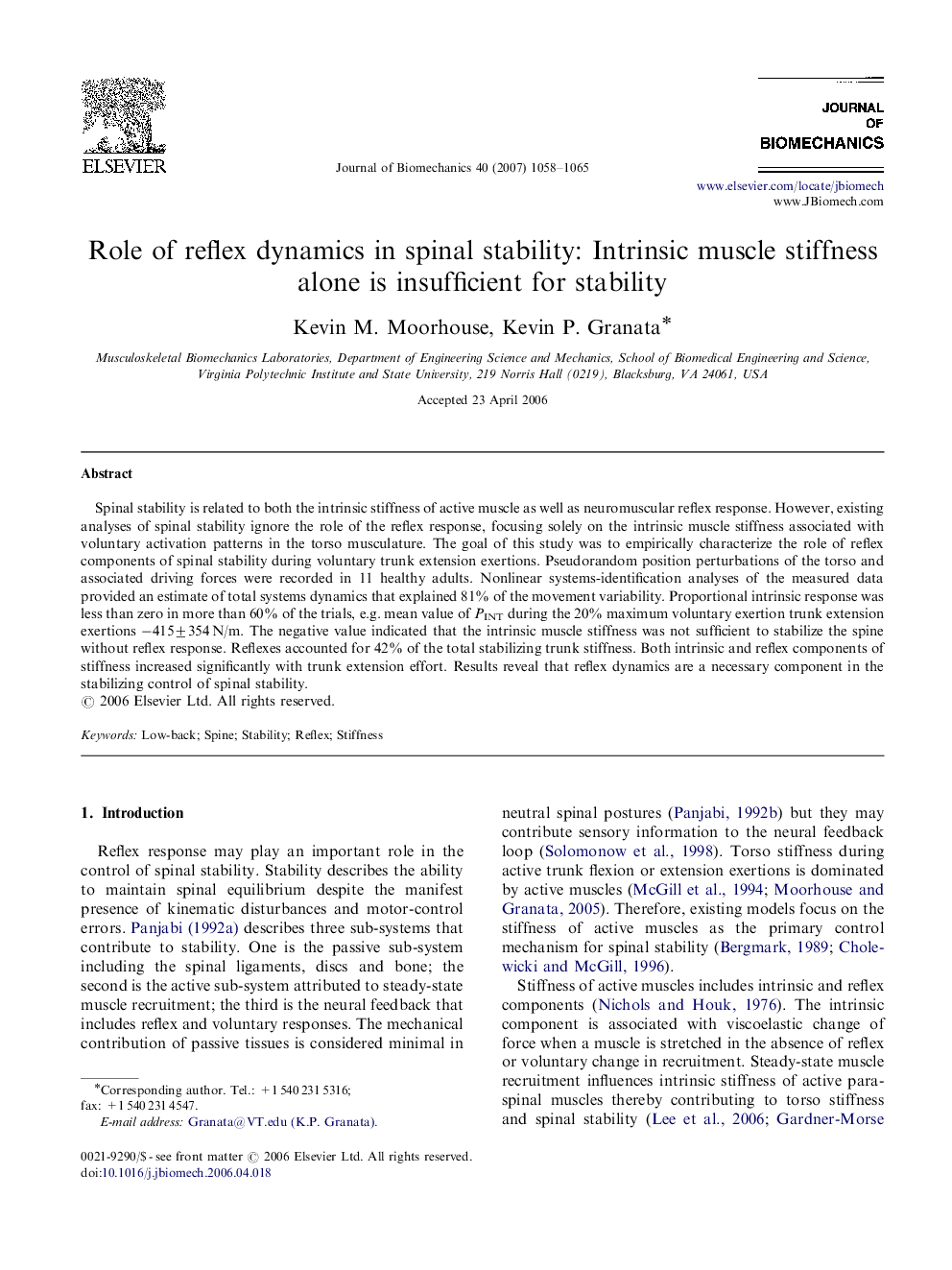| Article ID | Journal | Published Year | Pages | File Type |
|---|---|---|---|---|
| 875337 | Journal of Biomechanics | 2007 | 8 Pages |
Spinal stability is related to both the intrinsic stiffness of active muscle as well as neuromuscular reflex response. However, existing analyses of spinal stability ignore the role of the reflex response, focusing solely on the intrinsic muscle stiffness associated with voluntary activation patterns in the torso musculature. The goal of this study was to empirically characterize the role of reflex components of spinal stability during voluntary trunk extension exertions. Pseudorandom position perturbations of the torso and associated driving forces were recorded in 11 healthy adults. Nonlinear systems-identification analyses of the measured data provided an estimate of total systems dynamics that explained 81% of the movement variability. Proportional intrinsic response was less than zero in more than 60% of the trials, e.g. mean value of PINT during the 20% maximum voluntary exertion trunk extension exertions −415±354 N/m. The negative value indicated that the intrinsic muscle stiffness was not sufficient to stabilize the spine without reflex response. Reflexes accounted for 42% of the total stabilizing trunk stiffness. Both intrinsic and reflex components of stiffness increased significantly with trunk extension effort. Results reveal that reflex dynamics are a necessary component in the stabilizing control of spinal stability.
